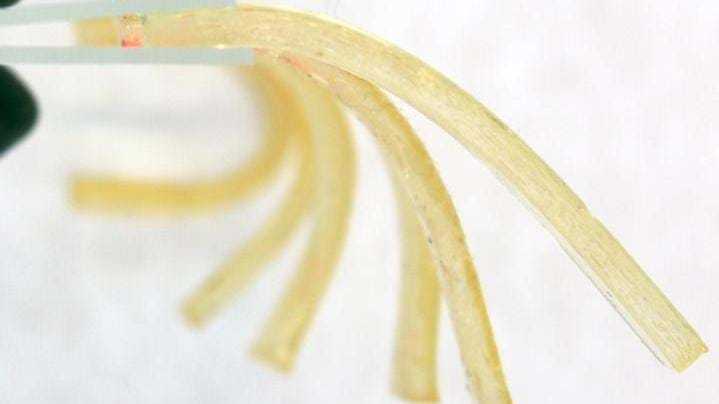Caffeine used as a catalyst to make gels for drug delivery

RESEARCHERS looking for a safe catalyst to use when creating gels for drug delivery have found that caffeine, when combined with citric acid, can be used to make biocompatible gels.
Polymer gels have a wide range of applications from medicinal uses to food science, but up until now it has been difficult to synthesise them without using toxic catalysts that require significant post-processing to make the gels safe for human use. Now, a team at MIT and Brigham and Women’s Hospital in Boston has developed a method to make a gel without using harmful substances – using caffeine and citric acid instead.
“Polyesters allow for the intentional design of ingestible materials made from bioderived resources,” said Angela DiCiccio, lead author of the paper. Catalysts previously used in polyester synthesis weren’t mild enough to enchain molecules without causing unwanted reactions or requiring high heat. “Our new platform provides an elegant solution to this problem using inexpensive materials and broadly accessible chemistries,” said DiCiccio.
Caffeine can act as a mild base which gives it the ability to draw protons from other molecules. When it deprotonates citric acid, the result is a carboxylate that can open up the rings in epoxides. This allows ester bonds to form and creates a biocompatible polyester.
The researchers reacted the plant-derived carboxylate with polyethylene glycol (PEG), a biocompatible polymer that is used in products such as toothpaste. Any drugs that are present in the mix when the gel is being formed become incorporated into the alternating chains of PEG and citric acid. They were also able to make gels with polypropylene glycol or a combination of both glycols. “Depending on what the application may be, or what drugs are being incorporated, you could mix and match to find an optimal mixture,” said Giovanni Traverso, a research affiliate at MIT and a gastroenterologist and biomedical engineer at Brigham and Women’s Hospital.
Two types of antimalarial drugs, artesunate and piperaquine, were successfully loaded into the gel during testing. Drugs loaded into gels could also be easier to swallow. “It’s really appealing for patient populations, especially children, who have difficulty with swallowing capsules and tablets,” said Traverso.
The gels can be moulded into 3D shapes which hold their structures at body temperature and when twisted or stretched. The surface of the gel can also be customised. For example, by imprinting the template of a lotus leaf (which has super hydrophobic properties due the microstructures on its surface), the gel can be made to repel water. This can be used to control the speed at which the gel moves through the digestive tract.
The gel represents a new class of material and the process is designed to be accessible even to minimally-equipped biomedical engineering laboratories.
Biomaterials http://doi.org/cnw7
Recent Editions
Catch up on the latest news, views and jobs from The Chemical Engineer. Below are the four latest issues. View a wider selection of the archive from within the Magazine section of this site.




